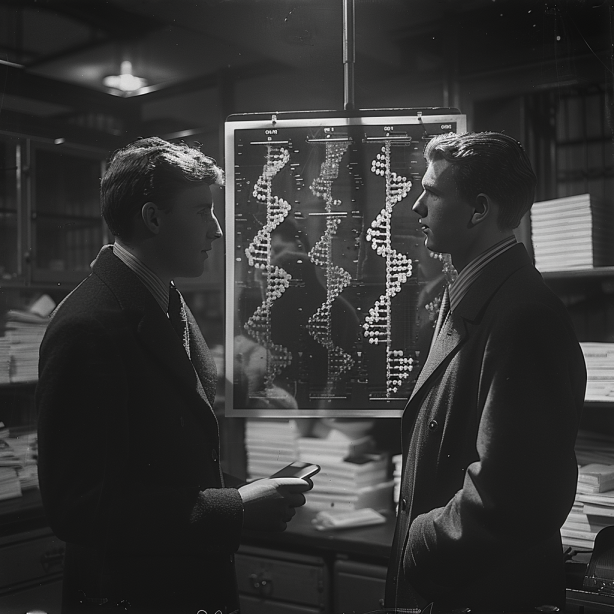The Discovery of the DNA Double Helix: A Groundbreaking Moment in Scientific History
In the realm of scientific breakthroughs, few are as significant as the discovery of the DNA double helix. On April 25, 1953, Francis Crick and James Watson published a groundbreaking paper in the prestigious Nature magazine, detailing the structure of DNA. This monumental achievement shed light on the mechanism of genetic replication and heredity, forever changing our understanding of life itself.
The Key Players: Crick, Watson, Franklin, and Wilkins
Before delving into the details of the discovery, it is essential to acknowledge the contributions of the key players involved. Francis Crick and James Watson, both brilliant scientists, collaborated on deciphering the structure of DNA. Their work was heavily influenced by the X-ray diffraction images produced by Rosalind Franklin and Maurice Wilkins.
Rosalind Franklin, a talented chemist and X-ray crystallographer, played a crucial role in capturing images of DNA using X-ray techniques. Her work provided critical insights into the structure of DNA, although she tragically passed away before the Nobel Prize was awarded. Maurice Wilkins, another accomplished scientist, also conducted research on DNA and contributed to the understanding of its structure.
The Structure Unveiled: The Double Helix
The paper published by Crick and Watson in 1953 revealed the groundbreaking discovery of the DNA double helix structure. Through their analysis of Franklin and Wilkins’ X-ray diffraction images, they deduced that DNA consists of two intertwined strands forming a twisted ladder-like structure.
The double helix structure of DNA is composed of nucleotides, which are the building blocks of DNA. Each nucleotide consists of a sugar molecule, a phosphate group, and one of four nitrogenous bases: adenine (A), thymine (T), cytosine (C), or guanine (G). The nitrogenous bases pair up in a complementary manner, with adenine always pairing with thymine and cytosine always pairing with guanine.
This complementary base pairing is essential for DNA replication and the transmission of genetic information from one generation to the next. The discovery of the double helix structure provided a clear understanding of how DNA is able to replicate and pass on genetic traits.
The Far-Reaching Implications
The discovery of the DNA double helix had profound implications for various scientific fields, revolutionizing our understanding of genetics, medicine, and biology as a whole. It laid the foundation for advancements in molecular biology, genetic engineering, and personalized medicine.
By unraveling the structure of DNA, scientists gained insights into the mechanisms of genetic diseases, paving the way for the development of diagnostic tests and targeted treatments. The field of forensics also benefited greatly from this discovery, as DNA analysis became a powerful tool for identifying individuals and solving crimes.
Furthermore, the discovery of the DNA double helix led to a deeper understanding of evolution and the relationships between different species. It provided evidence for the common ancestry of all living organisms and shed light on the intricate web of life on Earth.
Award and Recognition: The Nobel Prize
The significance of Crick and Watson’s discovery was widely recognized, and in 1962, they, along with Maurice Wilkins, were awarded the Nobel Prize in Physiology or Medicine. This prestigious accolade acknowledged their groundbreaking work and cemented their place in scientific history.
It is important to note that the Nobel Prize was awarded posthumously to Rosalind Franklin, who tragically passed away in 1958. Franklin’s contributions to the discovery of the DNA double helix were instrumental, and her role in the research continues to be acknowledged and celebrated.
Conclusion
The discovery of the DNA double helix in 1953 stands as one of the most significant scientific achievements in history. Francis Crick and James Watson’s elucidation of the structure of DNA, based on the X-ray diffraction images captured by Rosalind Franklin and Maurice Wilkins, revolutionized our understanding of genetics and laid the groundwork for countless advancements in biology and medicine.
Today, the impact of this discovery reverberates in laboratories, clinics, and research institutions worldwide. It serves as a reminder of the power of human curiosity and the potential for groundbreaking discoveries that can shape the course of scientific progress.

